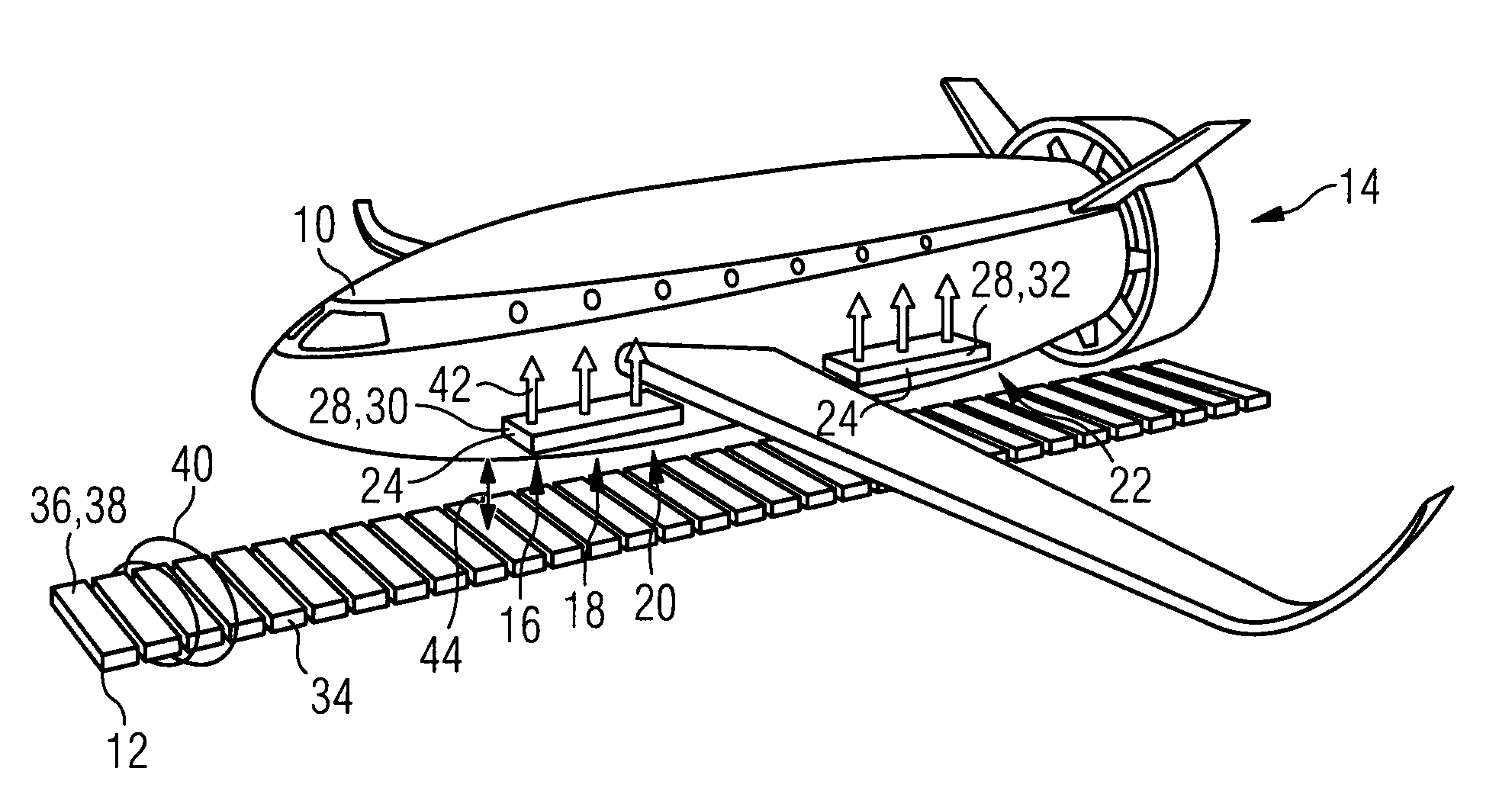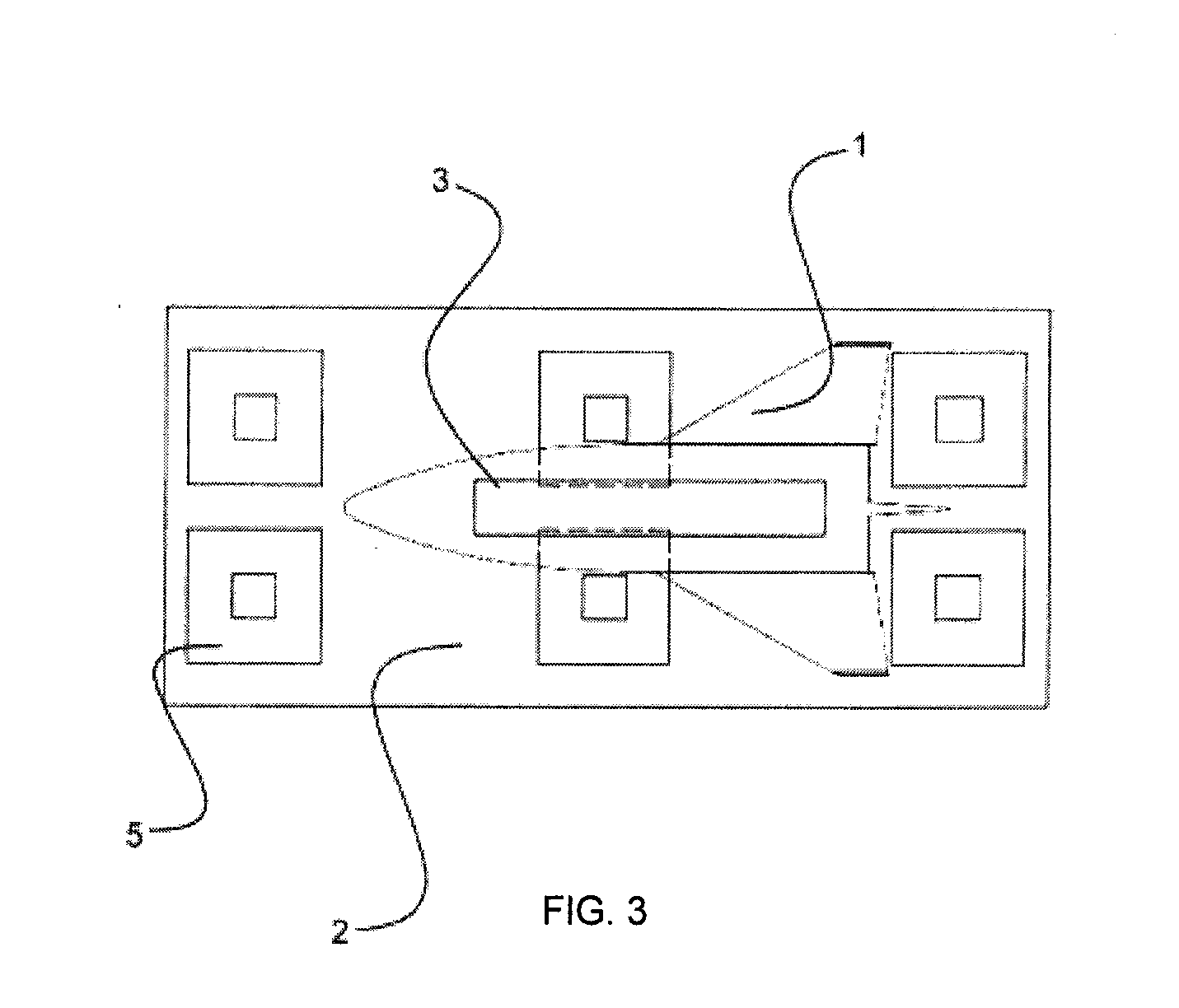Air Vehicle and Levitation System for Air Vehicle
a technology of air vehicle and levitation system, which is applied in the field of air vehicles, can solve the problems of affecting the cooling effect of power plants, affecting the comfort of passengers, and affecting the flight of passenger aircraft, and achieves the effect of reducing energy consumption
- Summary
- Abstract
- Description
- Claims
- Application Information
AI Technical Summary
Benefits of technology
Problems solved by technology
Method used
Image
Examples
Embodiment Construction
[0041]FIGS. 1 and 3 schematically illustrate a side view and a top view, respectively, of a first example embodiment of the invention involving an air vehicle 1 that is flying a landing approach above a landing and take-off runway 2. The air vehicle in this embodiment is a fixed wing aircraft that has aerodynamic lift-generating wings as well as aerodynamic control surfaces such as elevators, ailerons and a rudder (not individually shown) for aerodynamically controlling the flight of the air vehicle 1 in pitch, roll and yaw in the air, separate and independent from the runway 2. The air vehicle 1 also has thrust engines or a thrust drive system for propelling the air vehicle 1 through the air. The runway 2 is embodied or equipped as a guide path on a ground surface according to the invention.
[0042]In this embodiment, at least one superconducting element 4 is arranged in a cryostat 3 in an area along the bottom or belly of the air vehicle 1. Additionally, at least one superconducting...
PUM
 Login to View More
Login to View More Abstract
Description
Claims
Application Information
 Login to View More
Login to View More - R&D
- Intellectual Property
- Life Sciences
- Materials
- Tech Scout
- Unparalleled Data Quality
- Higher Quality Content
- 60% Fewer Hallucinations
Browse by: Latest US Patents, China's latest patents, Technical Efficacy Thesaurus, Application Domain, Technology Topic, Popular Technical Reports.
© 2025 PatSnap. All rights reserved.Legal|Privacy policy|Modern Slavery Act Transparency Statement|Sitemap|About US| Contact US: help@patsnap.com



